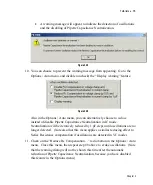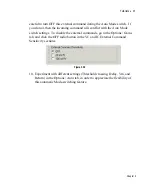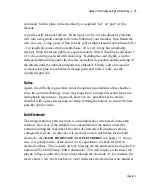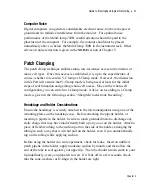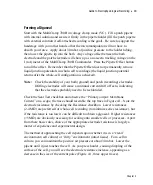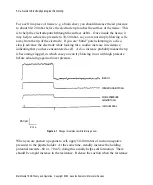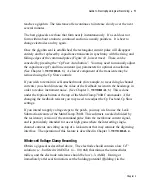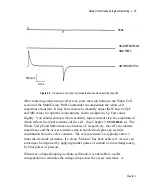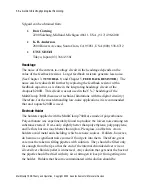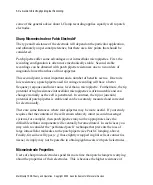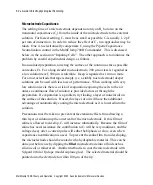
Guide to Electrophysiological Recording
•
49
Forming a Gigaseal
Start with the MultiClamp 700B in voltage clamp mode (VC). Fill a patch pipette
with internal solution and secure it firmly in the pipette holder (fill the patch pipette
with external solution if cell-attached recording is the goal). Be sure to support the
headstage with your other hand so that the micromanipulator will not have to
absorb your force. Apply about 30 mbar of positive pressure to the holder tubing,
then lower the pipette tip into the bath. Any voltage offset between the bath
electrode and the patch electrode will show up as a non-zero tracking voltage on the
I (nA) meter of the MultiClamp 700B Commander. Press the Pipette Offset button
to null the offset. Remember that the Pipette Offset does not permanently remove
liquid junction potentials in whole-cell recordings (the liquid junction potential
returns after the whole-cell configuration is achieved).
Note:
Check the stability of your bath (ground) and patch (recording) electrodes.
Drifting electrodes will cause a continual current drift off zero, indicating
that the electrodes probably need to be rechlorided.
Check the Seal Test checkbox and observe the “Primary output: Membrane
Current” on a scope; the trace should resemble the top trace in Figure 4.1. Note the
electrode resistance by checking the Resistance checkbox. Lower resistances
(2-4 M
Ω
) are preferred for whole-cell recording (to minimize series resistance), but
if the resistance is too low it can be difficult to obtain a gigaseal. Higher resistances
(>5 M
Ω
) are obviously necessary for sealing onto smaller cells or processes. Apart
from these basic rules, choice of the appropriate electrode resistance is largely a
matter of experience and experimental design.
The method of approaching the cell depends upon whether it is in a “clean”
environment (cell culture) or “dirty” environment (intact tissue). For a cell in
culture, you can maintain the positive air pressure at about 30 mbar. Lower the
pipette until it just touches the cell. As you press harder, causing dimpling of the
surface of the cell, you will see the electrode resistance increase, appearing as a
decrease in the size of the current pulse (Figure 4.1, three upper traces).
Chapter 4

